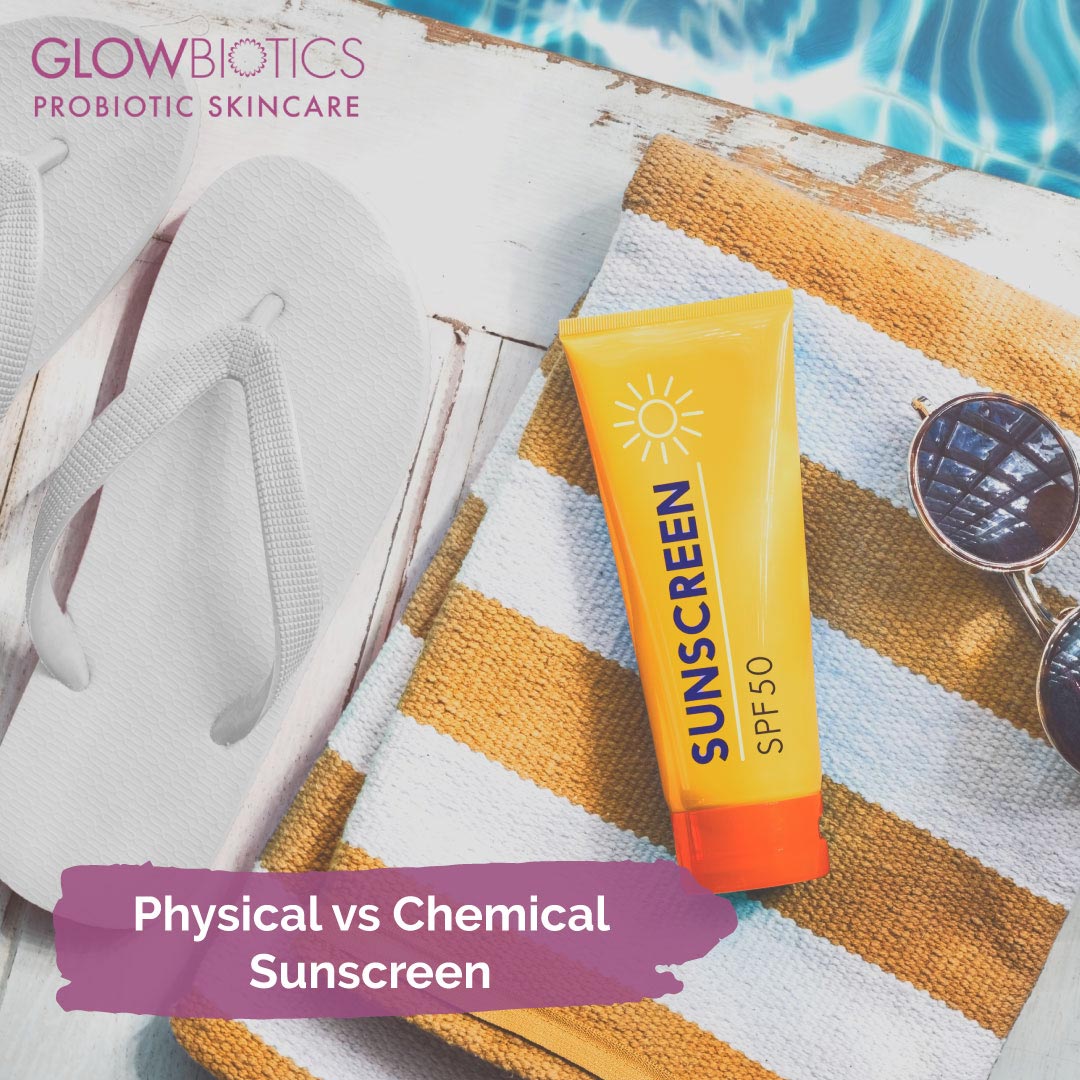You've heard it over and over again: Sunscreen protection is a must! The amount of damage that the sun's UV rays can do to your skin is absolutely dizzying! So very many of your common complexion qualms can oftentimes be traced back to your time spent outside in the sun.
Hopefully, we've finally got you on board with doing what you can to protect your skin. But you're still full of questions! What type of sunscreen is right for you? How do you know you're not causing more harm than good?
Types of Sunscreens
Sunscreens can come in a variety of different formulations. Depending on what your tactile senses desire and your activity levels deem, you can choose from sprays, lotions, gels, or waxes. There's literally a sunscreen for every pocket, beach bag, purse, and backpack out there.
There are two main types of ingredients that make up the protection part of sunscreen: organic (carbon-based) chemicals and inorganic.

Chemical Sunscreens
Chemical sunscreens contain organic compounds like oxybenzone, octinoxate, octisalate, and avobenzone. They absorb the sun's rays so that your skin doesn't have to, converting them into heat through a chemical reaction, and then releasing the heat from the body. Because they're usually thinner, they can be spread across the skin easier, making them seem like a good choice for daily use.
Due to their nature, though, your skin can oftentimes react with these chemical ingredients and experience an allergic reaction. There is also definitely a waiting period. After applying, you should still generally avoid the sun for about 20 minutes before heading outside. The protection also gets used up more quickly when in direct UV light, so re-application should be more frequent. There is also an increased risk of irritation for sensitive skin types with formulas of higher SPF.

Physical Sunscreens
Physical sunscreens contain ingredients that are minerals like zinc oxide or titanium dioxide. They work by sitting on top of the skin and blocking entrance by UV rays. They deflect and scatter the rays away from the skin. You'll also hear them referred to as mineral or natural sunscreens. They can give you protection from both UVA and UVB rays, and they take effect as soon as they are applied.
While they're less likely to clog your pores, they may feel heavy or leave a film on your skin. They're also more likely to rub or sweat off easily.
Zinc oxide is perfect for use because it is actually an anti-irritant and is well-tolerated by many skin types, including the delicate skin of babies.
Visualize pictures of people in the 50's sunbathing on the beach with white noses. They were using physical sunblock to protect their skin. Fortunately for us, science has advanced, so that there are ways to still incorporate physical sunscreens into your routine without people being able to actually see your sunscreen!
Physical sunscreens are generally a better choice for people with heat-activated skin, like those with redness and rosacea, because they deflect the heat and energy of the sun away from the skin. They're also less likely to cause stinging and irritation of the skin.
They can rub off, sweat off, and rinse off fairly easily, so they should be reapplied when outdoors, especially when exercising.

Dangers of Chemical Sunscreens
Of the 1,400+ sunscreens that were tested by the Environmental Working Group (EWG), only 5% of them met their safety standard! Over 40% were listed as potentially contributing to skin cancer!
Many of the chemical sunscreens are able to absorb into the skin and wind up in other tissues as well. Many of those commonly used can have some pretty powerful effects on your bodies. They're endocrine disruptors, are estrogenic and can interfere with thyroid and other hormone processes in the body.
Oxybenzone, for instance, is considered to be an endocrine disruptor. It can reduce sperm count in men and can contribute to endometriosis in women. Alarmingly, a study by the Center for Disease Control and Prevention (CDC) found oxybenzone in the tissues of 96% of the population. Oxybenzone should never be used on children or on pregnant and breastfeeding women.
Hawaii is concerned. In May 2018, they passed a bill banning the sale and distribution of sunscreens containing oxybenzone and octinoxate. Both chemicals are believed to be harmful to the ocean's coral reefs, potentially increasing the coral's susceptibility to bleaching. Considering up to 14,000 tons of sunscreen reportedly end up in coral reefs every year, that could be significant.
Hmmmmmm . . . . .
If these chemicals can cause harm to coral, what other effects could they be having on our bodies?
Safer Sunscreen
Since chemical sunscreens have been shown to be toxic with links to cancer, endocrine reproduction disruption, and DNA mutation, your best bet is to stick with a physical sunscreen. For optimal effectiveness with sunscreens, non-nanoparticle zinc oxide is the best option. It's an FDA-approved active mineral ingredient, and on its own, it provides safe broad spectrum UVA/UVB protection.
It's a good habit to apply sunscreen to your face as part of your morning moisturizing ritual, and then again before you go outside. Look for a product that is made with zinc oxide, but that excludes chemicals like oxybenzone and octinoxate.
GLOWBIOTICS Tinted SPF 30 Broad Spectrum UVA/UVB Sunscreen is a water-free, oil-free formula enhanced with essential vitamins and antioxidants, making it great for all skin types. Being lightly-tinted, it's the ultimate daily tinted makeup primer. It utilizes two forms of physical barrier: 11% Titanium Dioxide, and 4% Zinc Oxide. Safe for you, as all GLOWBIOTICS products are, it's paraben-free skincare, as well as free from other harmful ingredients like phthalates, sulfates, artificial dyes, and any known cancer-causing ingredients.
While you need to be applying sunscreen regularly, you need to be judicious in your choices. While chemical sunscreens may offer some value, the harm they may be generating could far outweigh the benefit.

